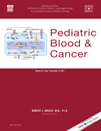Clinical characteristics and treatment outcome of children with intraocular retinoblastoma: A report from a Chinese cooperative group†‡
Conflict of interest: Nothing to declare.
Our cooperative group is the Eye & ENT Hospital (EENT Hospital) in conjunction with the Division of Hematology/Oncology at the Children's Hospital of Fudan University in Shanghai. It is one of the three main therapeutic centers for retinoblastoma in the Chinese Mainland.
Abstract
Background
To present the characteristics and treatment outcome of patients with intraocular retinoblastoma in a Chinese cooperative group.
Procedure
Between January 2005 and March 2009, 159 eyes of 133 patients with retinoblastoma were included in this retrospective study. The International Classification of Retinoblastoma (ICRB) staging system was noted for each patient. Cases with visible extraocular extension at diagnosis were excluded. The patient data were reviewed for demographic information, clinical findings, and managements.
Results
Of 133 cases, there were 83 (62%) male and 50 (38%) female, ranging in age from 2 months to 134 months (median, 23 months; mean, 26 months). There were 26 bilateral cases (20%). One hundred and twenty-four cases (93%) were deemed sporadic and nine cases (7%) were deemed familial. Leukocoria was the most common presenting symptom. One hundred and twenty-three eyes (77%) of 123 patients (92%) had no visual potential. Only 36 eyes (23%) of 30 patients (23%) utilized vision-preserving treatments. The ocular salvage rate was 83% (30/36) for this group. The cumulative probability of survival was 98% (Kaplan–Meier method) at 60 months follow up.
Conclusions
The overall survival rate of this study is in agreement with data from developed countries. In appropriate patients, systemic chemotherapy, and focal ophthalmic therapy are effective and carry little morbidity. Compared with more medically developed countries, there are still many challenges in the management of retinoblastoma in China. Early detection and doctor education should be an important future goal. Pediatr Blood Cancer 2011; 57: 1113–1116. © 2011 Wiley Periodicals, Inc.




